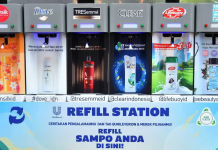In its issue dated 20 June 2015, The Economic and Political Weekly wrote in its editorial ‘The Noodle Muddle’ in part: “The Maggi Noodles controversy has triggered a much-needed debate on food safety standards in India. Unfortunately, as with most such debates, attention tends to focus on the specifics, in this instance the culpability of the multinational company Nestle in marketing a product that allegedly contained not just monosodium glutamate (MSG) but also contained lead above permissible levels, instead of discussing how and why this happens.
“The question of whether Nestle was negligent about the quality of its product, and deliberately mislabelled it as not containing MSG when it apparently did, is still being debated as the tests on the product varied from one government certified laboratory to another. Rather than establish conclusively that its product was safe, the company chose to withdraw it. Yet, the problem is far from resolved and many questions remain unanswered. If, as some laboratory tests proved, the noodles did have higher than permissible levels of lead, how did this happen? Was it through the wrapping, which is out sourced by Nestle to another company, was it due to the water used in manufacturing the product or from the machines used to manufacture it? Apart from the lead, did the company add MSG to the product but claim it did not, knowing India’s lax regulatory regime? Or did the tests show up other types of glutamate that are present in the ingredients but are not necessarily MSG? These are questions that need to be answered as the issue is not just about the culpability of this one multinational but any number of other companies, including Indian companies, that could face similar challenges if their products are tested.”
The E&P Weekly editorial raises the issue of food packaging safety and we should get ready for the focus to shift from the processed food inside, to the packaging, especially packaging which is indirect contact with food products. Of particular concern is the use of inferior paper and film substrates and inks that can lead to the migration of the unsafe ingredients of the inks, the substrates or even the chemicals used in the printing, converting and filling and sealing process. The cleanliness from unsafe chemicals and volatile compounds in the environment of the pressrooms is an issue just not for the packaging but also for the production personnel in packaging plants. Another concern is the integrity of both the contents and the packaging in the distribution and retail process – in other words safety throughout the supply chain – from farm to fork.
Unfortunately, as we have seen in the recent noodle muddle, there is a disconnect between global, national and state standards and laws and their testing and enforcement agencies. However, these issues cannot be swept under the carpet. While on the one hand the packaging industry is rooting for the food processing, consumer product and organized retail industries it needs to step up and speak collectively on the safety, health and environment issues. These are connected and the organizations and individuals who have spoken in responsible and even futuristic and holistic terms need to get together and reassure the food and consumer product companies that they will not supply unsafe packaging at any price. Subsequently we need to reassure the end-users and consumers as well.
The ingredients, the materials, technology and even the testing instruments and labs are available. As in many things it is a matter of will and our industry has always contained organizations and individuals who act and speak in responsible and even futuristic ways. This is their time. After all, there is huge bias amongst Indian consumers for ‘fresh’ food. If we cannot clean up our act how can we call it a bias or say that this thinking is unjustified?











